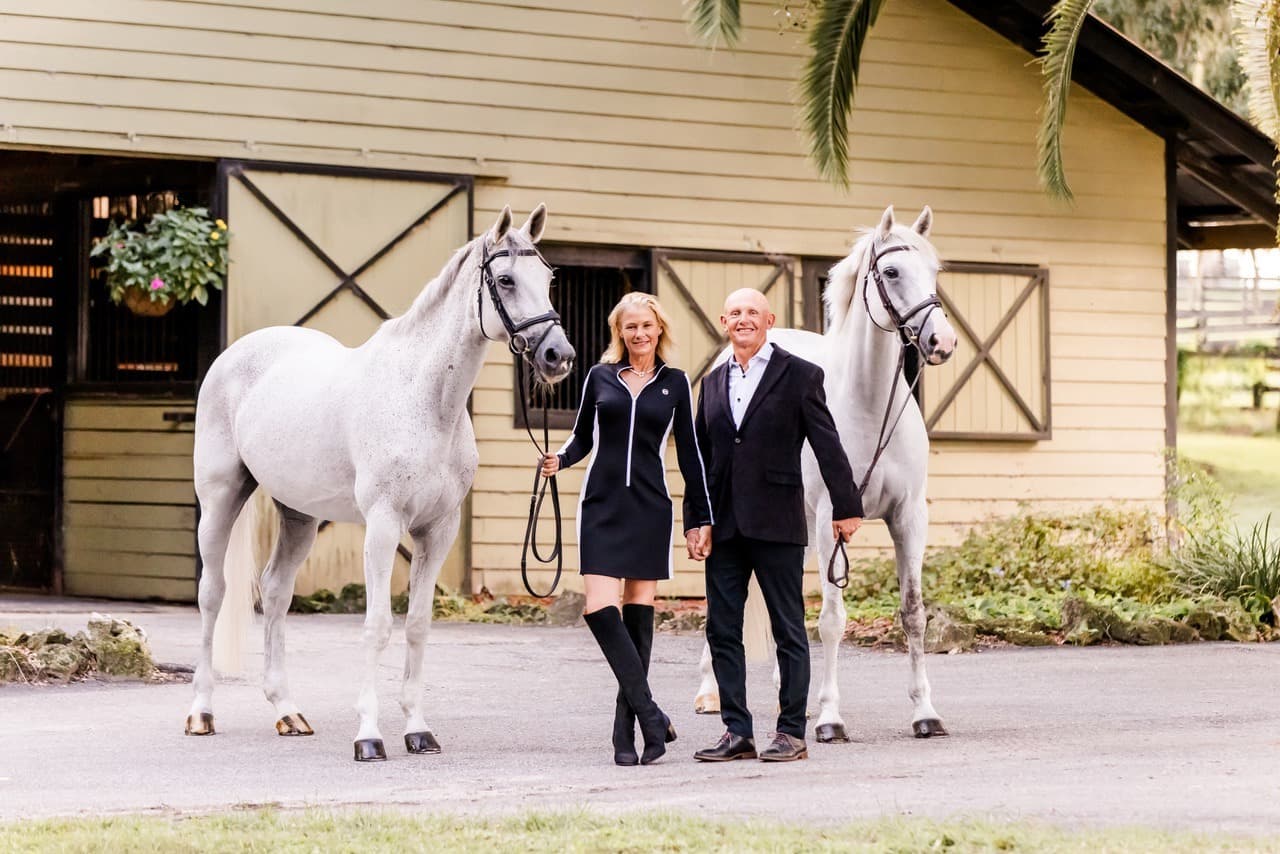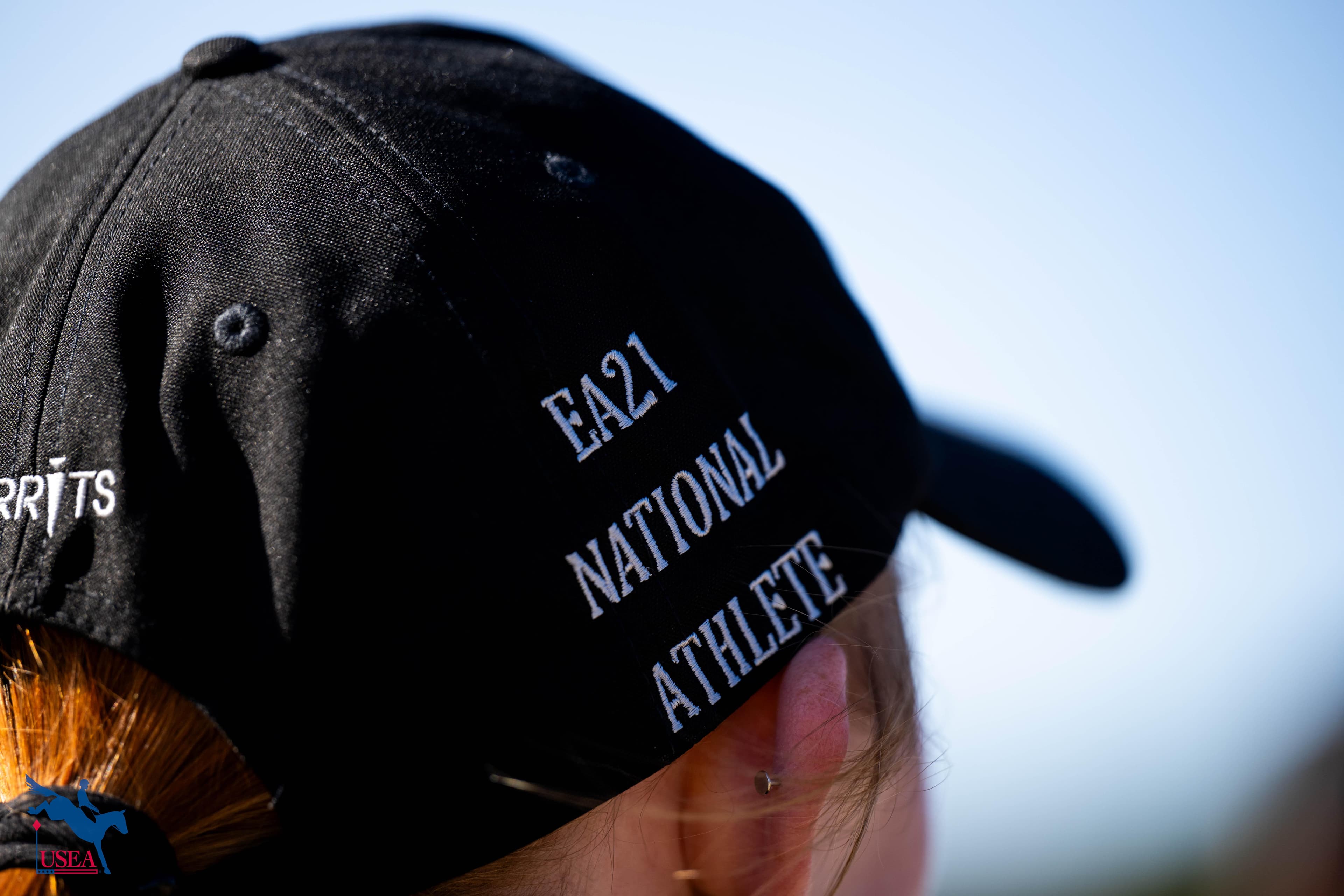Planning for Success on Endurance Day: A Lecture by Chris Newton, DVM
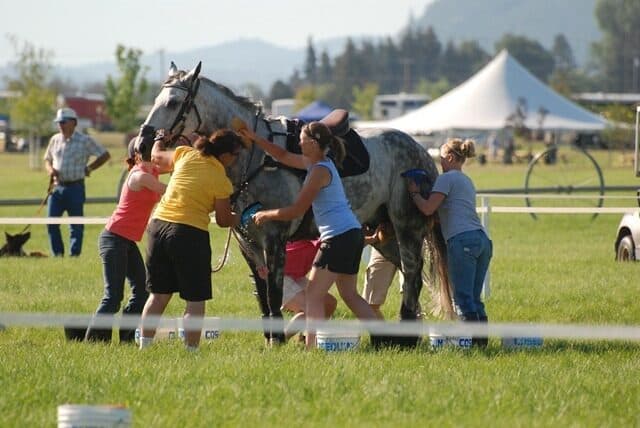
This past May, I was lucky enough to volunteer at Indiana Eventing Association’s Training Level Three Day Event (T3DE). At a classic event like a T3DE, after the two phases of roads and tracks and the steeplechase phase the horses have their vital signs and soundness checked by a veterinarian before heading out on cross-country. At Indiana, Chris Newton, DVM, of Rood and Riddle Equine Hospital in Lexington, Kentucky, volunteered his time to lecture T3DE competitors on preparing their horses for endurance day. He discussed not only what to do in the ten-minute box, but a larger philosophy of planning for the horse’s physical health over the long term.
Dr. Newton began by drawing some contrasts between eventing in the past and in the present, and what those differences mean when preparing the horse. The first Olympic event, in 1912, took place over four days, and began with a four-hour endurance test over 34 miles on the first day, a six-minute steeplechase on the second day, show jumping 4’3” on the third day, and a dressage test at the end. Since those early years, emphasis has dramatically shifted from speed and endurance to dressage and show jumping. Therefore, the type of horse that could run fast and long (Thoroughbreds) is now less essential than a horse who can perform well in the other phases (often a cross between Thoroughbred and draft breeds). The relevance for today’s competitors is that we all must consider our horses’ type and breed when planning our preparation for eventing, and particularly for a classic event. Thoroughbreds, for example, do not need lots of galloping, but will need to build the muscles required for balance and collection.
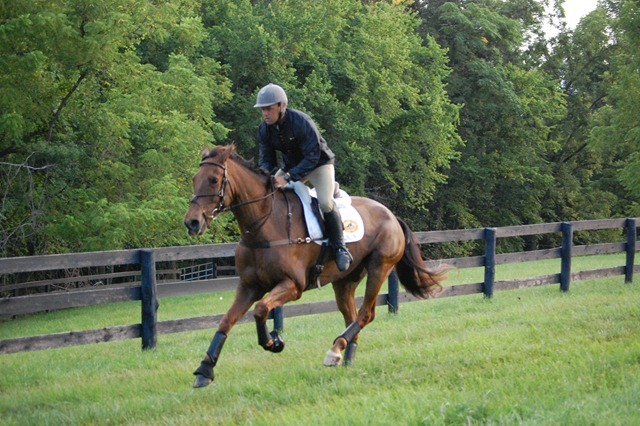
Another recent change in eventing that directly affects preparation is that competitions are held nearly year-round. While Dr. Newton recalls pulling shoes and giving horses extended vacations during winter months, the southern eventing season that starts in January allows many runs before a spring destination event, with a far shorter winter vacation. Qualification requirements, too, mean that riders of horses who are aiming for the upper levels must balance their horses’ well-being with their ambitions to qualify for that destination event. The consequence of the long competition season is that riders must carefully pick and choose events, because it is easy to burn a horse out without a solid plan. The goal is to bring a horse to a peak, then allow some time to recover, and then bring him to a higher peak at a later date. These plans should be in place by the end of the preceding season, although you must always allow for some flexibility.
What has not changed is that any rider must plan with the long term in mind: what do I want this horse to be doing in a year? In five years? In ten years? Dr. Newton reminded us that event horses do not reach their mental peak until age fourteen, and that ages fourteen to sixteen can well be the best years of their careers—if, that is, they are still sound. Therefore, it is in a rider’s best interest to give the horse the best chance possible to reach those prime years in sound and healthy condition.
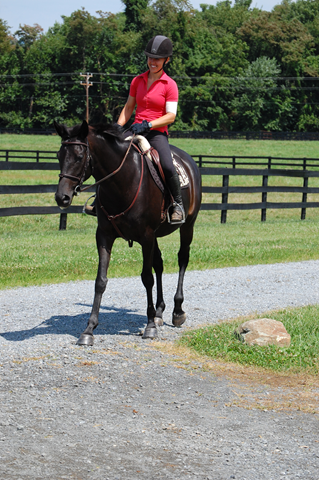
The best way to condition for longevity is to focus on the tissues that prepare the slowest: tendons and ligaments. These structures are followed by bone, and finally by muscle (which includes the heart). When injured, tendons and ligaments take up to eighteen months to heal (and scar tissue can remain); bones take between six weeks and nine months; and muscles take about one month. Conditioning the tendons and ligaments enhances their strength and elasticity. The way to do this is with long, slow work: weekly or twice-weekly hacks of one to two hours at the walk and trot (readers of issue 3 of Eventing USA will recall that Stephen Bradley recommends much the same thing!). These long and slow workouts are essential to young horses, but they are also key to keeping an older horse strong and fit. They should form the base of a conditioning program.
Strategies in use by upper-level competitors can be of use to T3DE riders, and one of these is to do routine physical evaluations of the horse, with input of the vet, farrier, and rider. There are two reasons for this: one is to find potential problems and make changes to the horse’s care that might help avert them, and the second is that the knowledge gained by such evaluations will help the rider communicate with the vets at classic format events. By the time of the event, the rider will know the horse so well that he or she can keep an eye out for known problems (a tendency to get sore in a right sacroiliac joint, for example), and deal with them.
As for managing the horse on endurance day itself, Dr. Newton said that the rider and her team should first check over the horse after Phase B and inspect the horse’s feet. Since the farrier at Indiana was located at the ten-minute box at the end of Phase C, he urged riders to have something they could apply to a hoof to temporarily protect it in case of a lost shoe at the end of B.
After arriving at the ten-minute box at the end of C and getting the horse’s temperature, the rider’s team should try to get the horse’s temperature down to between 102 and 103. Heart rate and respiration are related to core body temperature: if the temperature is brought down, the heart and respiration rates will also decrease. This is where ice water can be of great assistance. Ice water should be applied to the horse’s body, paying special attention to the areas of the body that dispel the most heat: under the throatlatch and under the tail. Then, because the horse cools by evaporation, the water should be scraped off immediately. Several cycles of ice water on, ice water off should be repeated. Scraping is even more important if the humidity is high and water evaporates more slowly. If the humidity is very high, alcohol can be mixed with the water (but be sure to keep a bucket of plain water for drinking—and do not forget to keep the humans hydrated too!). Dr. Newton cautioned against cooling the horse’s muscles too much, however, because this could hamper the removal of waste products.
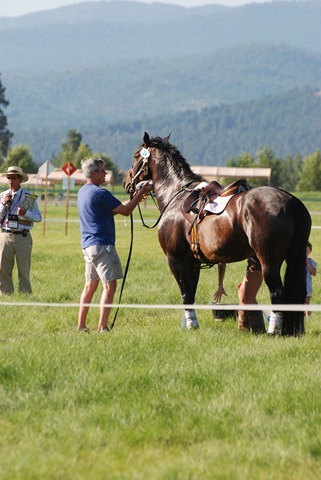
Once back at the barn, ice at least the horses’ front legs after cross country, and apply poultice. This therapy will indicate to the rider whether there is any swelling that should concern him. If, when the wraps come off, the legs have filling that looks different than on a normal day, the rider should be concerned. It is okay, at this point, for the T3DE horse to receive a nonsteroidal anti inflammatory drug (NSAID), as long as the horse is not dehydrated. While this would not be permitted at an FEI event, the T3DE is a national and educational event and such medication is permitted.
At the end of the competition, the rider should find out the horse’s vital signs and assess how the horse performed and recovered overall. If the temperature reached 105, then the rider underestimated how much conditioning was needed. For this reason, Dr. Newton urged riders to check the horses’ temperatures after conditioning rides at home to remain apprised of how their program is working. Also, take notes about how the horse felt at the end of cross country, and how he show jumped. Even though Dr. Newton estimates that horses work at 50-60% of their capacity at a T3DE, compared to 90-100% at a CCI****, he urged riders to be as diligent as possible to keep their horses fit and sound. He emphasized that as riders, we bear the responsibility of knowing our horses and making decisions to keep them healthy for the long term.


